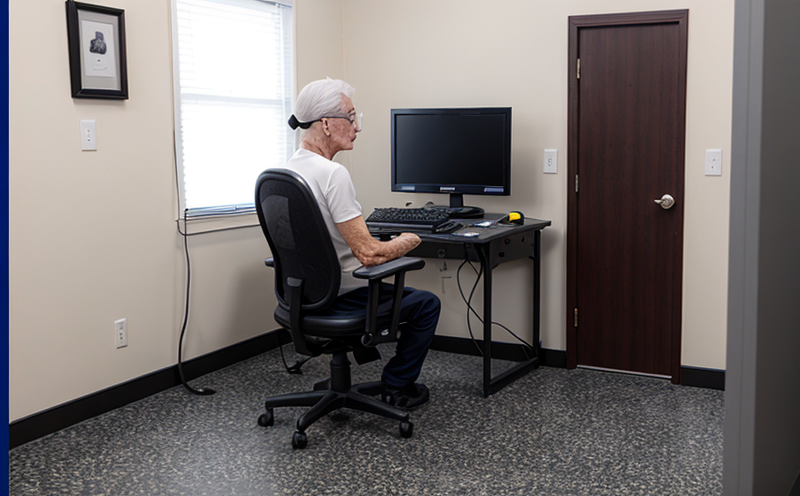AATCC 93 Accelerotor method for abrasion resistance
The AATCC (American Association of Textile Chemists and Colorists) Method 93 is a recognized standard used to evaluate the abrasion resistance of textiles. This test measures how well fabrics withstand mechanical wear, which is crucial in ensuring durability and longevity in various textile applications.
Textiles exposed to constant friction, such as those found in clothing, automotive interiors, and industrial fabrics, are particularly susceptible to abrasion damage. The AATCC 93 Accelerotor method provides a controlled environment where the fabric can be subjected to simulated wear conditions that mimic real-world use. This allows manufacturers to assess the performance of their products before they reach the market.
The test involves placing a specimen on an accelerated abrading machine, which simulates the frictional forces that occur during normal use. The Accelerotor machine applies controlled amounts of rubbing action against the fabric using abrasive media. This process is repeated under specified conditions to determine how much wear occurs over time. The results help in understanding the durability of the textile and guide design improvements.
The AATCC 93 method is particularly useful for assessing fabrics used in high-wear areas such as seat covers, upholstery, and work uniforms. By simulating real-world abrasion conditions, it helps manufacturers predict how their products will perform under typical usage scenarios. This ensures that textiles meet the required standards of quality and durability expected by consumers.
The Accelerotor method is widely used in the textile industry to ensure consistent product performance across different production batches. It allows for early identification of potential issues with fabric design or manufacturing processes, leading to more reliable products. Additionally, it helps in optimizing fabric formulations and selecting appropriate raw materials that contribute to superior abrasion resistance.
Understanding the parameters involved in this test is essential for accurate interpretation of results. Key factors include the type of abrasive media used, the speed at which the Accelerotor operates, and the duration of the testing period. These variables can significantly impact the outcome of the test, making it important to follow strict protocols when conducting these evaluations.
For quality managers and compliance officers, this method provides a valuable tool for ensuring product consistency and meeting regulatory requirements. By incorporating AATCC 93 into their quality assurance processes, organizations can enhance product reliability and maintain brand reputation in the market. R&D engineers benefit from this testing as well since it aids in developing new materials with improved abrasion resistance properties.
In summary, the AATCC 93 Accelerotor method plays a critical role in evaluating textile durability by simulating real-world wear conditions. Its application ensures that textiles meet stringent quality standards and perform reliably under expected usage scenarios.
Applied Standards
The AATCC Method 93 is based on several international standards, including ISO 16845:2017 (Dustfall Test) and ASTM D6382-11e1 (Abrasion Resistance). These standards provide a comprehensive framework for conducting abrasive tests on textiles. Compliance with these guidelines ensures that the results obtained from testing are consistent and comparable across different laboratories.
For instance, ISO 16845 focuses on measuring dustfall onto fabrics during wear, which is an essential aspect of evaluating abrasion resistance in garments like outerwear and work uniforms. On the other hand, ASTM D6382 emphasizes the importance of using appropriate abrasive materials and conditions to accurately assess fabric durability.
By adhering to these standards, laboratories can ensure that their testing procedures are accurate and reliable, thereby providing trustworthy results for clients seeking assurance about product quality. This alignment with recognized international practices also enhances credibility within the industry and supports global trade by facilitating interoperability between different lab environments.
Benefits
- Enhances Product Durability: By simulating real-world wear conditions, this method ensures that textiles are tested under realistic scenarios, leading to products with improved longevity and performance.
- Predicts Performance Early: Manufacturers can identify potential issues early in the development process through accelerated testing, allowing for timely adjustments before large-scale production begins.
- Consistent Quality Assurance: Following standardized protocols helps maintain consistent quality across different batches of fabric, ensuring uniform product performance and reliability.
- Facilitates Regulatory Compliance: Adherence to recognized standards ensures that products meet industry-specific regulations and certification requirements, enhancing overall compliance efforts.
- Informs Material Selection: Results from this test aid in selecting suitable raw materials for enhanced abrasion resistance properties, supporting innovation in fabric design.
- Supports Sustainable Practices: Understanding textile durability through accelerated testing promotes the use of sustainable practices by encouraging responsible material selection and production methods.





